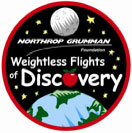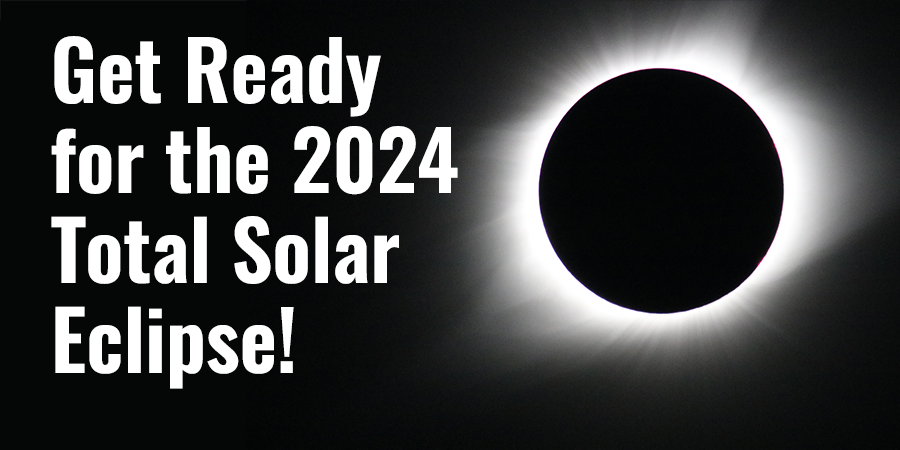A Look at Zero-G
Shortly after finding out she was one of thirty teachers selected to participate in a Zero-G flight as part of the Weightless Flights of Discovery Program, sponsored by Northrop Grumman, Erin Moore, an eighth grade teacher at Lincoln Avenue School in Illinois, gave Science Buddies an inside look at her sudden shift from "teacher" to "astronaut" - in her student's eyes. Her awareness that her students had already put her in orbit, left her faced with a philosophical decision: correct their assumptions or enjoy the sudden spark of enthusiasm she saw in their eyes about something related to science. Clearly Erin is a teacher who thinks a lot about her responsibility to her students, to their education, to their understanding, and to their dreams. We at Science Buddies have little doubt that Erin's students are lucky to be learning both science and life from a teacher like Erin.
She may not have gone to space, but as you'll see from Erin's recap of her flight, the experience was transformational, to say the least. Here's a look at the flight in her own words:
Recently, I had the opportunity to experience weightless flight though a program sponsored by the Northrop Grumman Foundation. Now my task is to find words to describe feelings that go beyond ordinary description. To put it simply. I felt like all the rules of the world had been broken, and I was a child in a playground finding out how it all worked again.
Here's how it went.5:45: Day starts. Wake up and pack.
6:45: Go to the meeting area and have a nice breakfast. It was more food than I thought they would allow. There were sweet breads and many of my favorite fruits, but remembering that I could easily get sick, I tried to refrain from eating too much.7:30: A pre-flight news and media event begins. Quickly we start to change into our flight suits and notice that our name tags are upside down. "That is on purpose, a tradition," I am informed when I point it out. The name tags should stay upside down until I have been upside down.
7:40: There are cameras flashing, breaking the darkness of the room. Our eyes struggle to adjust to the presence of the media.
8:00: Our pre-flight briefing is a movie. One of the first rules discussed is "no swimming." (We are told that the closest thing our body can relate to weightlessness is being underwater. So "no swimming.") Next, "no jumping" because we could easily hit our heads on the top of the plane. Lastly, "no kicking" because it could cause injury.
10:00: After a lengthy check and re-checks from TSA agents, we are finally aboard the plane.
The weightless portion of my flight begins, and I begin to break every rule they have carefully explained to me.
The first parabola was "martian gravity," about 1/3 my body weight. I would push off the floor and find it easy to push myself 2-3 feet in the air. I would then sink slowly back to the ground. The whole thing felt as I had dreamed for all these years that it might.
The next 2 parabolas were Lunar gravity. I experimented with 1/6th of my body weight by doing push-ups and bouncing jumps. By this point, none of the teachers on the plane tried to maintain any pretense of composure. We were laughing, screaming, and shouting for joy. Even as I was constantly bumping into people, I was filled with happiness.
The next 12 parabolas were zero g.
The first time I felt myself lift from the bottom of the plane, it was effortless. I was floating away. "I'm floating." Those were the only words I could say.
Just "being," surrounded perfectly by air, no struggle, no trying to keep that position... was magical. After 2 more parabolas, I laughed and played like a child who has just learned to balance a bike and takes off, soaring with freedom. I broke the rule of trying to swim through the air on a consistent basis. "Swimming" was the only way I could figure to try and affect my world, to move through it. Without gravity, I had no way of going from point A to B. I flared my arms like a bug turned upside down, but it was pointless.
As I grew accustomed to weightlessness, I started to pull my legs behind me. I started to think of myself only as my rib cage and arms. My legs were useless. In a zero-g environment, I existed only in my upper torso. That was the only way to affect my world.
The world had become a playground on that plane. We played with bubbling water and an air-zooka for propulsion. And, of course, there were floating M&M's, an astronaut favorite. I felt like a child with some idea of logic and no fear. I would try any experiment. Like a toddler first ready to walk, I was ready for the next step. Even in the noise of the airplane, there was a quiet stillness within me. I crossed my legs and felt... nothing, the nothing of being surrounded by air. The moment I was floating, tumbling upside, rolling over and over through air, I had achieved a dream set out by mother and myself 27 years ago.
The laws of Newton were evident during the flight. I could not move if I did not have something to push off of, pull myself towards, or collide with. The middle of the airplane was a no man's land. In the middle, I could struggle but get nowhere, until gravity returned to claim me and pull me to the floor of the plane again.
Every 20 seconds of zero-g, ended with me falling to the floor of the plane and laying on the floor. During the deep dives, gravity would take back its gift and exact a toll of 1.8gs. I felt the painful pull of Earth mostly in my ears and jaw, but I managed each time by focusing my eyes and concentrating on my breathing until I adjusted. I would spin, float, swim, and laugh for the next hour, hardly aware of the passing time.
11:15: The flight ended. Now I was back at a re-gravitation ceremony. I had snickered to myself when I first saw this part of the day on the schedule. A "re-gravitation ceremony"? But it was truly needed. When I was back on the ground, I felt the real pull of the Earth in a way I never appreciated before. I felt the Earth pulling me, and I felt my slight pull back. It was at that moment -- and every moment since -- that I marveled at Newton. Issac Newton figured out his laws of gravity and motion without any benefit of weightlessness. It wasn't until I was weightless that I could say, "I get it!"
So now the task is how to explain this experience - and the science behind it -- to my students. I will tell them that the world through the eyes of a scientist is a playground. A scientist is a person who appreciates every aspect of the world because she understands the incredible amount of magic involved. A scientist marvels at the millions of things that are going right to provide something as simple as a breath of air. To study and appreciate science means that you can dream of the incredible, fly through the air, sense the magic of life, and imagine what we can do. To look at the world in the way a scientist sees it is the happiest of ways. It reminds me of the joys of the greatest scientists, young children.
~ Erin
As Erin notes, it's hard to really "get" the concept of gravity until it's taken away. In talking with your students and classes about gravity, here are some Science Buddies Project Ideas that might be helpful and eye-opening:
- Centripetal Force Science Buddies' Difficulty Level: 2
- Parachutes: Does Size Matter? Science Buddies' Difficulty Level: 4
- Distance and Constant Acceleration Science Buddies' Difficulty Level: 6
- Balancing Act: Finding Your Center of Gravity Science Buddies' Difficulty Level: 6-8

A cooperative effort between Northrop Grumman, sponsor of Science Buddies' Aerodynamics Interest Area, and ZERO-G, the Weightless Flights of Discovery program began in 2006.
Many thanks to Erin for taking time from her busy school schedule to write this post-flight piece for us to use on the Science Buddies Blog!
Categories:
You Might Also Enjoy These Related Posts:
- Plastics and Earth Day - Science Projects
- Arduino Science Projects and Physical Computing
- 10+ Robotics Projects with the BlueBot Kit
- 5 STEM Activities with Marshmallow Peeps
- March Madness Basketball Science Projects: Sports Science Experiments
- Women in STEM! More than 60 Scientists and Engineers for Women's History Month
- Explore Artificial Intelligence and Machine Learning with Student AI Projects
- 10 Reasons to Do the Rubber Band Car Engineering Challenge









